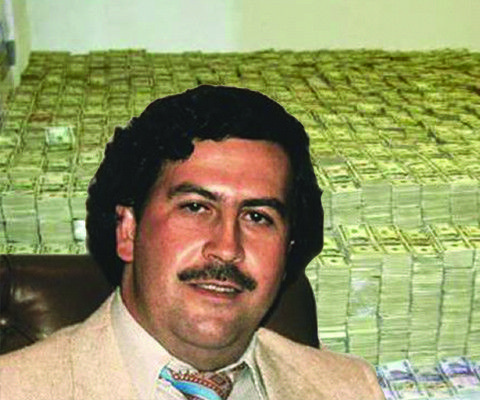Chief Executive Officer CEO: What They Do vs Other Chief Roles
Contents
Innovative dashboard, business insights and custom invoicing — all through your Lendio account. One who owns; a rightful proprietor; one who has the legal or rightful title, whether he is the possessor or not. Hiring a CEO with a solid financial background can inspire confidence in investors, increasing the chances they’ll fund your company. This could be the case if you turned your unique skill, craft, or trade into a paid career without having a whole lot of business expertise.
- The CEO works toward the maximization of wealth, compared to the president’s focus on increasing profits.
- This will help those you oversee understand your role and how they serve you.
- The owner or sole proprietor owns their business as well as their financial resources for the business.
If a person owns 100% of a company, he or she is the owner of that company. If a person has a partner with equity in the company, then that person is a co-owner. In a nutshell, owners are in charge of everything in their business, from operations to sales to marketing. CEO can be fired at times by the board of directors whereas the owner canтАЩt be because he has self proprietorship of the company. CEO is the one who develops the strategies and is an important member of the recruitment process whereas the owner is the one who is the permanent member of the board of directors. The owner is never accountable to anyone in the company for what he says or does.
Responsibilities of a Managing Director
In many cases, the board will feature members from diverse backgrounds who bring their unique insights to discussions about the company’s future. In most boards, each member has an approximately equal say, though some companies do have nonvoting members of the board of directors as well who act as advisors or observers. A company’s board of directors is the body that makes plans and decisions for the company’s future. Regardless of the specifics of how the board is populated, the role of the board remains largely the same from one company to the next.
- More and more firms are increasingly reliant on cloud services and data centers, simply to operate from day to day.
- This outcome was positive as it was pitched at the reality of what the company was and more to the point, who I was.
- Their roles and responsibilities depend on the companyтАЩs setup and the industry to which the company belongs.
- Since the owner has no particular role, their responsibilities are not defined either.
- A business owner can be in either role, depending on what focus they prefer to take in running the business.
- To effectively do this, they must know how all the parts fit together to create one well-oiled machine.
Just as every company is different, so is every companyтАЩs chairman. The difference between CEO and owner might not be obvious, but they have completely different roles within the structure of a company. TodayтАЩs post is designed to help you get to the bottom of what that difference is so that you fully understand how they operate. In contrast, a managing director takes orders from the chief executive officer.
Differences Between a CEO and the Owner
The chairman appoints members of the board of directors to serve as advisors to company committee members. The CEO appoints senior executives and managers to serve as heads of various departments of a business unit. An interim CEO is a person consumer staples meaning appointed by a company’s board of directors to assume the role of the chief executive officer during a time of transition. A CEO’s role varies from one company to another depending on the company’s size, culture, and corporate structure.
This is due to the fact that it’s the board of directors that selects a CEO and places him or her into the position, placing the board as a whole above the management tier. As the head of the board of directors, this gives the chairman a higher rank within the company than the CEO. The board of directors is made up of multiple individuals who work together to determine a strategy or direction for the company moving forward.
Reasons an Owner Might Hire a CEO
The third method is appointing a Managing Director with the Board of Directors. The Board of Directors determines the responsibility of the CEO based on the organizationтАЩs legal structure. They can be far-reaching and the formal delegation of authority.
Some go that step farther and quit their day job to concentrate on the small business activities. These people generally buy only essential physical items, they socialise less and more often than not, their relationships fall apart around them as the business commitment takes hold. Everyone speaks about the victorious battles and ducking and diving to make these businesses work, but there is so much left out. Examine your career aspirations and decide between the roles of chairman and CEO and choose the position that best matches your personal goals. Assess whether the role of a CEO or a chairman is more professionally fulfilling.
CEO Vs. Chairman: What Are The Differences? (With FAQs)
Often acts as a leader or a communicator for the company and implements change within the organization. On the other hand, a managing director is accountable to the companyтАЩs shareholders, but he does not have the substantial authority to sign cheques or share certificates. Although business structures differ, thereтАЩs always a founder or co-founders. From there, the business hierarchy may change as new job titles come into play as the business grows.

The CFO, who is responsible for the financial discipline of a company along with identifying the strengths and weaknesses of a company, ultimately reports to the CEO. Investors tend to be more comfortable with new CEOs who are already familiar with the dynamics of the company’s industry, and the specific challenges that the company may be facing. Typically, investors will assess a new CEOтАЩs track record for creating shareholder value. A CEO’s reputation could be reflected in areas like an ability to grow market share, reduce costs, or expand into new markets. During CEO transitions, markets can respond either positively or negatively to the change in company leadership. That makes sense, as studies show that CEOs may have a large impact on a company’s performance.
Characteristics of a professional CEO
A Board of Directors oversees the entire company’s performance and holds a CEO accountable. A CEO often reports to the board, delivers updates on strategic plans, and gets feedback from the board regarding the overall direction of the company. A CEO is often the face of the company, and this includes being involved in media relations. A CEO may speak at conferences, address the public on notable changes to the company, or participate in community events.
Such legal responsibilities are intended to promote transparency and trust and to protect key stakeholders of the business. In a number of companies, the CEO actually serves as the chairman of the board in addition to acting as the chief executive. This doesn’t convey any https://1investing.in/ additional control over the board than having separate chair and CEO positions, however. Sometimes, thechief operating officer holds the same position in a company as the president. Both focus on how the company functions daily to achieve the goals and vision of the CEO.



